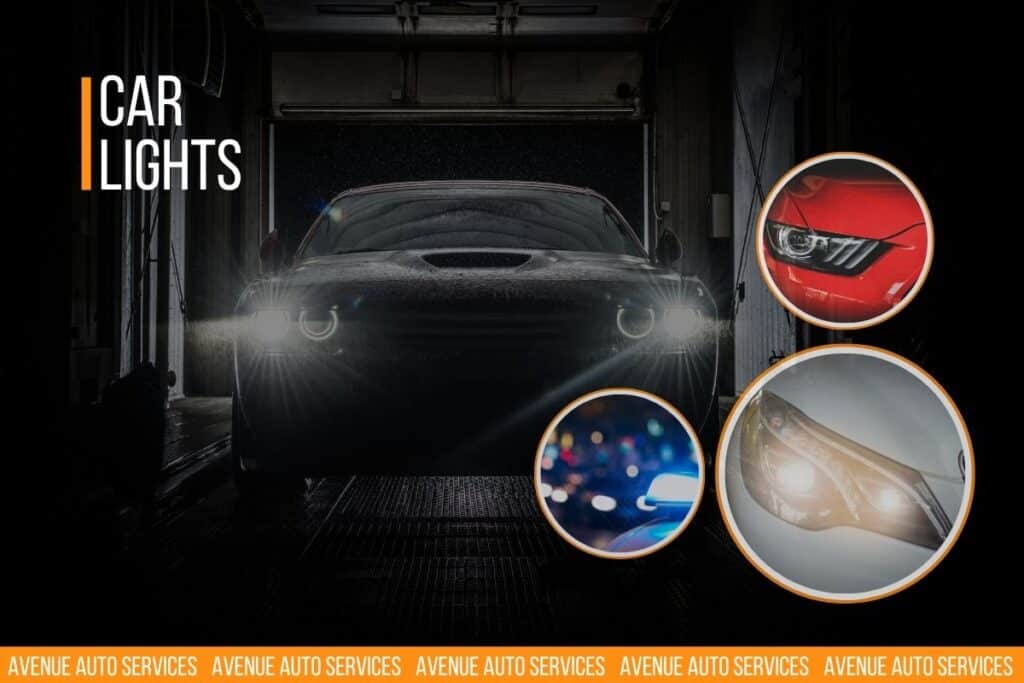Car lights are fundamental components of every vehicle, serving as a vital bridge between visibility and safety. Whether you’re navigating city streets after sunset, signaling your next move on the highway, or reversing out of a parking space, properly functioning lights help ensure both your safety and that of others on the road. Yet, many drivers overlook the importance of understanding how car lights work, what each type is designed for, and when they require attention or replacement.
In this comprehensive guide, we’ll explore everything you need to know about car lights — from their types and functions to maintenance tips and signs that it’s time for a replacement.
What Are Car Lights?
Car lights are external and internal lighting devices installed in a vehicle for various purposes such as visibility, communication, and safety. These lights illuminate the road, allow you to see in poor lighting conditions, and alert other drivers about your intentions (like turning or braking).
Over time, automotive lighting has evolved significantly — moving from basic incandescent bulbs to high-efficiency halogen, xenon, and LED lights. Modern cars now come equipped with advanced lighting systems designed to enhance both performance and style.
Main Types of Car Lights and Their Functions
There are several categories of car lights, each serving a distinct purpose. Let’s go through the primary types:
1. Headlights
Function: Illuminate the road ahead and improve night-time visibility.
Subtypes:
-
Low Beam (Dipped Beam): Used for general night driving without dazzling other road users.
-
High Beam (Main Beam): Used in areas without oncoming traffic to illuminate a longer stretch of road.
Modern Variants: Halogen, HID (Xenon), LED, and adaptive headlights that move based on steering input.
2. Tail Lights
Function: Activate alongside the headlights and remain illuminated at night to show the rear profile of the vehicle.
Color: Red
Location: Rear corners of the vehicle
Tail lights help other drivers estimate your position and distance in low-light situations, especially during night drives.
3. Brake Lights
Function: Light up when you apply the brakes, warning vehicles behind you that you’re slowing down or stopping.
Color: Bright red
Location: Rear center and sides
This is one of the most critical safety lights. A malfunctioning brake light can result in rear-end collisions and traffic fines.
4. Turn Signal Lights (Indicators)
Function: Indicate the driver’s intention to turn or change lanes.
Color: Usually amber (can be white or red depending on country regulations)
Location: Front and rear corners of the vehicle, often integrated into side mirrors
Turn signals flash in rhythm and should always be used when changing direction, overtaking, or merging.
5. Reverse Lights
Function: Illuminate automatically when the vehicle is put in reverse gear.
Color: White
Purpose: Warn pedestrians and nearby vehicles of your intent to back up and increase your rear visibility at night.
6. Fog Lights
Function: Designed to help visibility during fog, heavy rain, or snow.
Front Fog Lights: White or yellow light mounted low on the bumper
Rear Fog Lights: Bright red light on the rear to make your car visible to others in low-visibility situations
Fog lights cut through haze and prevent glare that headlights might reflect in foggy weather.
7. Daytime Running Lights (DRLs)
Function: Automatically illuminate during the day to make your car more visible.
Color: Usually white
Location: Front of the vehicle, often LED
DRLs are required by law in many countries and are particularly useful in reducing daytime collisions.
8. Hazard Lights
Function: Used during emergencies or when your vehicle is stationary on the road.
They activate all turn signals to blink simultaneously, alerting others that the vehicle is in trouble or could be a temporary obstruction.
When Should You Replace Car Lights?
Car lights can fail due to various reasons such as bulb burnout, electrical faults, lens damage, or moisture accumulation. Identifying the right time to replace them is crucial for safety and legal compliance.
Common Signs Your Car Lights Need Replacement:
-
Dimming or Flickering Light: This could indicate a failing bulb or alternator issue.
-
Light Not Working at All: Often due to a burnt-out bulb or wiring fault.
-
Color Changes: A shift in light color, especially with HID or halogen bulbs, can indicate aging.
-
Dashboard Warning Lights: Many newer vehicles will alert you when a bulb is out.
-
Cracked or Cloudy Lens: Reduces light output even if the bulb works fine.
General Replacement Timeline (Approximate)
| Light Type | Lifespan Estimate |
|---|---|
| Halogen Bulbs | 450 – 1,000 hours |
| HID Bulbs | 2,000 – 3,000 hours |
| LED Lights | 20,000 – 30,000 hours |
| Brake/Turn Signals | Check every 6 months |
How to Maintain Your Car Lights
Regular maintenance not only extends the life of your lights but also ensures consistent performance. Here’s how you can take care of your car lights:
-
Inspect Monthly: Check that all exterior lights are functioning.
-
Clean Lenses: Dirt, insects, and oxidation can block light. Use lens cleaners or polishing kits if necessary.
-
Replace Faulty Bulbs Promptly: A single faulty brake or headlight compromises safety.
-
Avoid Overheating: Don’t use bulbs with a higher wattage than recommended.
-
Check Electrical Connections: Loose or corroded wiring can cause flickering.
Are Aftermarket Upgrades Worth It?
Many drivers upgrade to LED or HID headlights for better brightness, longevity, and aesthetic appeal. While these upgrades can improve night visibility and energy efficiency, they must be installed properly to avoid glare and meet legal standards.
Pros:
-
Brighter light output
-
Long-lasting (especially LED)
-
Energy-efficient
-
Modern look
Cons:
-
Higher initial cost
-
May require additional converters or headlight housings
-
Improper installation can cause glare and safety issues
Legal Requirements in the UAE
In the UAE, it’s mandatory to have all vehicle lights functioning correctly. Common violations and their associated penalties include:
-
Driving without headlights at night: Fine up to AED 500
-
Non-functional brake lights or indicators: Fines + black points on your license
-
Unauthorized light modifications: Hefty fines and vehicle impoundment
Regularly inspecting your lights or getting them checked during routine servicing can help you stay compliant and avoid penalties.
Conclusion: Don’t Ignore Your Car Lights
Car lights are your silent communicators on the road. They help you see, be seen, and stay safe. Whether it’s fog lights in heavy mist, brake lights in rush-hour traffic, or turn signals on a busy roundabout, each light has a purpose — and failing to maintain them can put lives at risk.
To ensure you’re driving safely and legally:
-
Regularly inspect all your car lights.
-
Replace bulbs at the first sign of failure or dimming.
-
Clean and align your lights for maximum visibility.
-
Upgrade wisely if needed — and always follow traffic laws.
When in doubt, consult a professional mechanic or lighting technician. Safe driving begins with being visible — and that starts with your lights.




